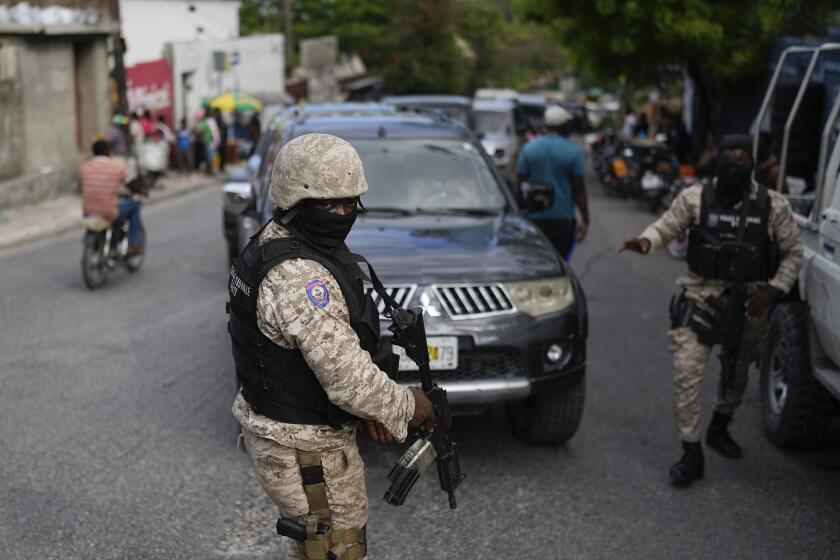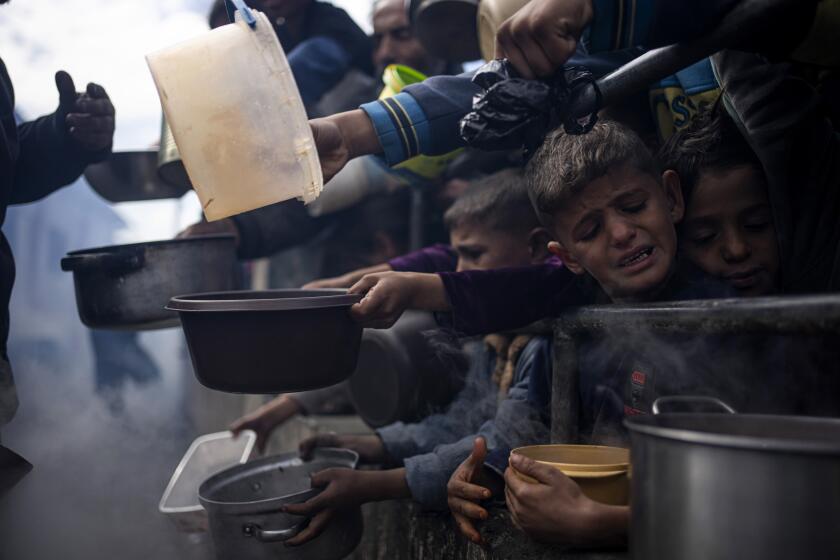Last Flight : Point Mugu Stung by Loss of Its Hornet Fighter Squadron
Lt. Cmdr. Roger White pushed forward the throttle of his F/A-18 Hornet and, seconds later, was thundering aloft in an ear-splitting roar from the main runway at Point Mugu Naval Air Weapons Station.
No ordinary training flight, White’s Wednesday morning mission was a sad one.
The longtime naval aviator’s job was to fly one of three remaining fighter jets in his Navy reserve unit to a base in Texas where it was being permanently reassigned.
The flight is one of a series of acts involved in the shutting down of Point Mugu’s last fighter squadron. After 24 years standing ready for action, Naval Reserve Squadron VFA-305 will become formally decommissioned Aug. 20.
The squadron’s demise is part of Navy-wide cutbacks aimed at cutting defense spending and is estimated to save the service $22 million annually. In total, the reserve squadron, known as the Lobos, is staffed by more than 100 officers and enlisted crew members, most of them in the reserves.
To be sure, Point Mugu Naval Air Weapons Station has dozens of high-performance Navy jets. But these warplanes are used exclusively to test and evaluate various weapons systems. The last active-duty fighter squadron left Point Mugu in 1991.
For White, Wednesday’s flight took on special meaning. Knowing that it well may be his last chance to race across the sky as a Navy aviator, he wasted no time pushing his war bird aloft.
No more than 200 feet off the ground, White cranked a hard left turn around the control tower--a last salute to his comrades standing on the Tarmac.
“I have real mixed feelings about this,” he said of the unit’s imminent demise. “On one hand, I will have more time to pursue my interests in civilian aviation,” said White, a commercial airlines pilot. “But on the other hand, I will definitely miss flying jets like these and I will definitely miss my squadron mates.”
The Lobos were slated for shutdown earlier this year on a recommendation of President Clinton’s federal budget for fiscal year 1995. Although never ordered into combat, the unit was called up and deployed as a temporary fighter squadron aboard the aircraft carrier Abraham Lincoln in 1990.
While based at Point Mugu, a primary role for the 22-pilot squadron has been to provide “adversary training” to other Navy squadrons in the fleet. This training involves the pilots flying their Hornets in such a way as to simulate the tactics of Russian or other Eastern European adversaries.
*
Cmdr. Barry Rainey, the squadron’s commanding officer, said the closure of the unit has been difficult to accept for many reservists.
“It’s tough, really tough,” Rainey said. “But we realize the world is changing and that downsizing our military is going to be a fact of life. We’re dealing with it by keeping our thumb on (our emotions). I’m sure after it’s over and I’m sitting at home, it’ll be a different story.”
The Lobos are not scheduled to be replaced by any similar squadron, leaving the Point Mugu Navy base without a fighter jet squadron training for war.
“Yeah, it’s kind of a sad thing that we won’t have a squadron here anymore,” said Capt. Michael Kellard, commander of all Navy reserve units at Point Mugu. “This is something that strikes deep in our hearts. We’re going to miss them.”
Later Wednesday, Capt. Dave Kendall flew the last operational Hornet in the squadron to Point Mugu’s sister base at China Lake, near Ridgecrest. There the jet will be converted into a test aircraft.
Only one other Hornet remained in the squadron’s hangar at day’s end. Rainey said that if engine overhauls can be made in time before the unit’s decommissioning, he hopes to fly the last Hornet out himself.
If not, the jet may have to be trucked away.
“It’s a sad thing, especially when the aircraft go,” Kendall said before departing to China Lake. “But I’ve never served with a better bunch of people. It’s been an honor.”
More to Read
Start your day right
Sign up for Essential California for news, features and recommendations from the L.A. Times and beyond in your inbox six days a week.
You may occasionally receive promotional content from the Los Angeles Times.






